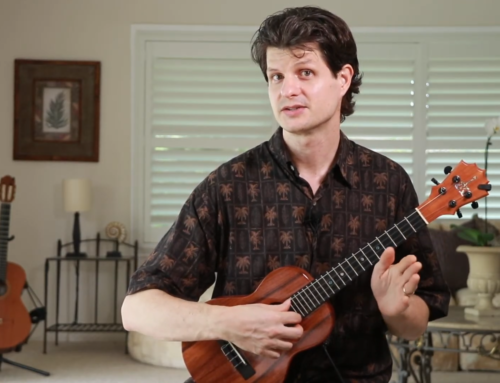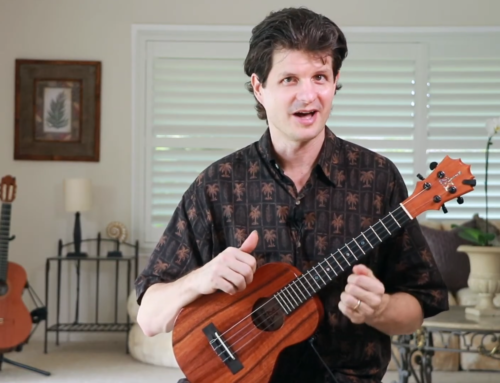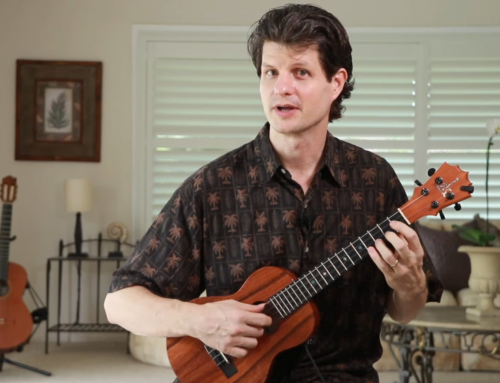After you have worked on alternating the index and middle fingers of the right hand to play melodies, accenting certain notes by playing them louder than others can bring out all sorts of rhythms that help to define meters (4/4, 3/4, 6/8, etc.), bring out melodies, and add variety to the music you play. In this video lesson we explore some exercises and techniques to get you started with accenting using open strings and a C major scale in first position. We then see how accenting can create various groupings of notes like triplets and sixteenth notes and then uneven patterns.




Jeff, Thank you so much for these great practice videos. I am thoroughly enjoying them as I practice developing a more classical style on the Ukulele. I do need to keep checking the “ recent “ posts in the blog though, as they don’t all seem to come via email….or is it they come to the posts before being sent via email? Anyway, your time and expertise is much appreciated. Your teaching style is very clear, relaxed and a good pace. Thanks x
Hi Anita,
All of the newsletter posts go up as soon as the emails are sent out, so if you keep an eye out in the email you should see them. I do show you received all four emails so far — please do check your spam folder as they can sometimes go there. Let us know by email at support@ukulelecorner.com if you run into any other issues. Thanks and best wishes.
Peace,
Dave Belcher
Another great one. Amazing how you can change the character of the music with a small change.
This was a fantastic lesson! So often I start by learning the melody, then the finger work, while playing the music rather… flatly. This lesson shows how accenting really changes a song into music. Thank you for producing it!
So many creative rhythms to make practicing a scale.
These are fabulous mini-lessons to complement the finger style course. I am now journaling and adding one of these mini-session to each 45 practise. The Simon Power Practice Technique for Musicians is a good read as well
Does it matter if I initiate a sequence of alternating index and middle fingers my i or m? For whatever reason, i often feel like my m is more dominate than my i and prefer to start my phrases with this finger.
Hi Jennifer, It is fine to start with either i or m when alternating. I agree that starting with m often feels best.